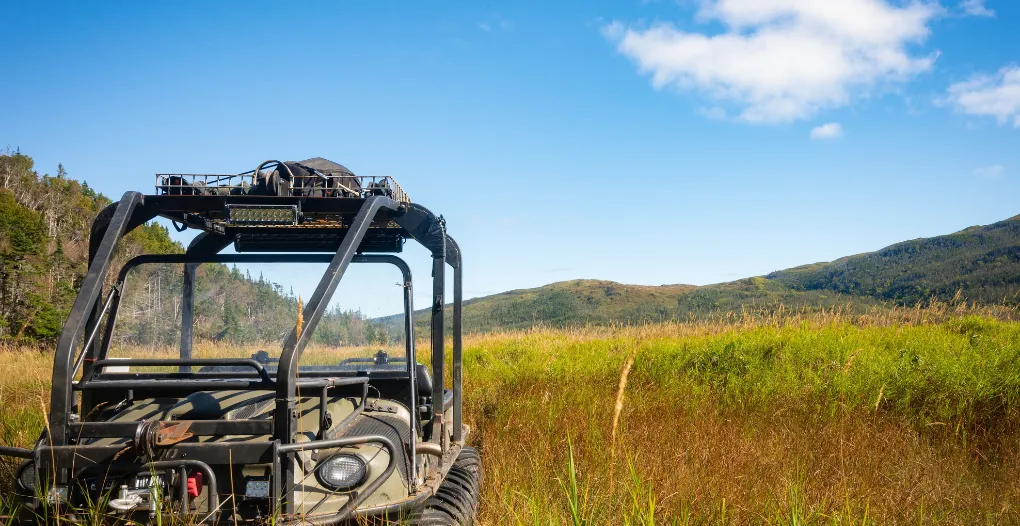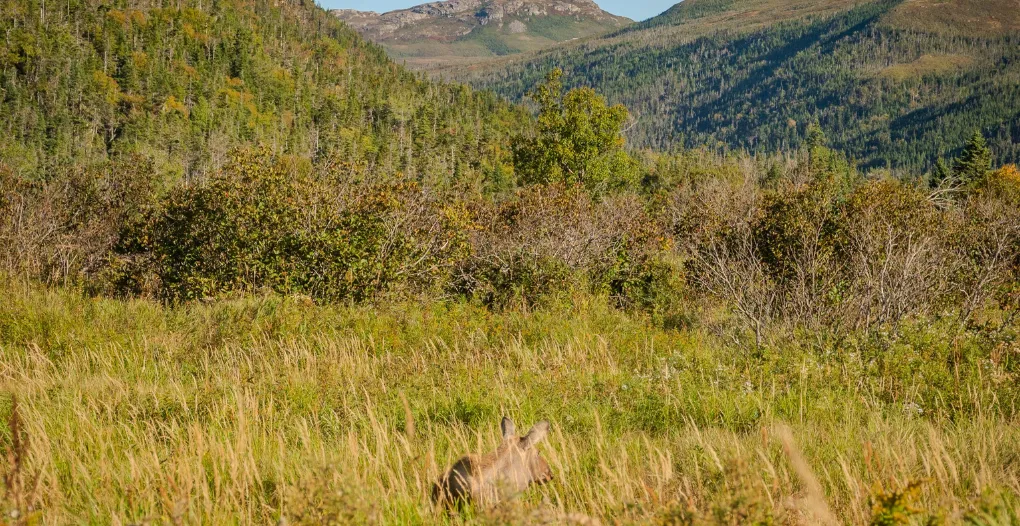Imagine yourself deep within the Newfoundland dense forests ready to hunt, but you’re finding it difficult to find any moose and before you know it, the day is ending without you catching any game. You’ll never have to worry about that again as we will help you understand moose from their feeding patterns, seasonal behaviour, and habitat.
By the end of this guide, you will be a pro at finding moose, understanding the way they think and the best spots to find them.
Moose Feeding Habits: What’s on the Menu?
Moose are herbivores; therefore, everything in their diet consists only of plants. Even though there is seasonal variation in diets, the principal composition includes feeding on woody plants, shrubs, and aquatic vegetation. In spring/summer, the diets include soft plants, which comprise grasses, ferns, and aquatic plants. During the fall/winter colder months, twigs, barks, and woody shrubs make up a majority of what moose feed on.
It is an important skill to be a hunter in understanding their diet to increase efficiency and success of finding a moose.
Seasonal Shifts: How Moose Behavior Changes Throughout the Year
Moose change their behaviors drastically in between seasons because of the weather and food. In the spring/summer, moose are more active, often seen grazing in open meadows or near water sources.
During autumn moose begin their rutting season. This is the mating period, during which males become more aggressive and territorial as they compete for the attention of females.
In the winter, moose behavior slows down as they conserve energy and may appear less active. Moose are often found in forested areas, where the trees provide shelter from the wind and additional sources of food like twigs and bark.
Knowing this information is crucial for avid moose hunters in Newfoundland, as we have a specific moose hunting season.
Where to Find Moose: Exploring Their Favorite Habitats
Moose are extremely adaptable animals, and as such, they can live in various habitats; however, they still have preferences when it comes to the place of residence. In Newfoundland, they can be found in mixed forests where shelter and plant material to eat is provided. Moose also like wetlands, swamps, and lakes since they possess valuable aquatic plants.
They are usually found in low-lying areas along the coasts of Newfoundland, where the climate is less harsh, but they also wander through the interior forests of the island.
The Best Times to Hunt Moose: Dusk and Dawn
Moose are most active during the early morning and late afternoon. At dawn, they are often in open areas or near water sources, while in the late evening, they return to feeding grounds. These periods, at dawn and dusk, offer the best chances for hunters to encounter moose, as they are less likely to be found in dense forest during the warmer midday hours or at night.
Tracking Moose: Tips for Finding Their Path
Moose tend to follow consistent trails, which may be located near feeding areas, water sources, or resting sites. If you’re tracking a moose during the rut, pay attention to signs of territorial markings, such as rubs on trees where the male has scraped its antlers.
It’s also important to watch for behavioral cues, such as scent marking or vocalizations. Males will make loud, guttural calls during the rut, while females may make high-pitched sounds.
What to Do When You Cross Paths with a Moose: Staying Safe

While moose are generally peaceful animals, encounters with them can be intimidating, especially if the animal feels threatened or surprised and may react aggressively if it feels cornered or unsafe.
If you encounter a moose, it’s important to stay calm, keep your distance, and always give them space to move freely. Do not approach the animal, and avoid making sudden movements. If you’re in a vehicle, remain inside and keep a safe distance. If you’re on foot, slowly back away while keeping an eye on the moose.
If the moose charges, find a safe area to take cover. A large tree or any solid obstacle between you and the moose can provide protection
Remember, a smart hunter is a safe hunter.
Moose are an integral part of Newfoundland’s ecosystem, understanding their behavior and habitat preferences can enhance your experience in the wild. Understanding their feeding habits, seasonal behaviors, and preferred habitats, are skills that are essential for a great hunter. Remember, when encountering a moose always prioritize safety, respect their space, and stay informed about regulations for a great hunting experience.
At Garia Bay Outfitters, we’re dedicated to making your hunting experience truly memorable. With high-quality equipment and expert guidance, we guarantee a successful adventure every time!

